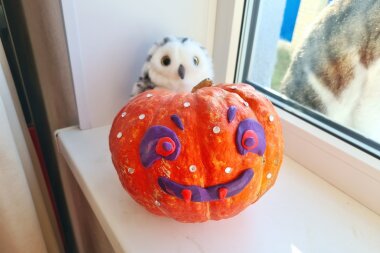Birthday party quest for children at home
A house quest for a child’s birthday party
Are you looking for a quest script to organize a great birthday party for your children in an apartment or house? Then you can choose a suitable version of the game by age and topic from our range of ready-made quests for children. Download and print the quest on your home printer, organize the tasks according to the instructions and get a camera to capture the game process. It's very simple and fun!
In this article, Questiks will teach you how to come up with and arrange a quest for children at home on your own. Don't be scared, it's very interesting and not difficult at all. It will take a little time a couple of days before the party (surely, you don't want to rush and fuss?) and some simple props: paper, felt-tip pens, scissors. Do you want to make it more complicated? You are welcome to do so! Add a couple of gadgets, a security lock and a handful of coins – and the quest instantly becomes more challenging. You choose the complexity of the tasks and the duration of the game.
The main advantage of such quest is that it "conducts itself" – it is not necessary to learn any words by heart, as in a school play, or be a party host showing off your talents. The main thing is to prepare all the tasks in advance and hide them in chosen places. That's it - easy peasy!
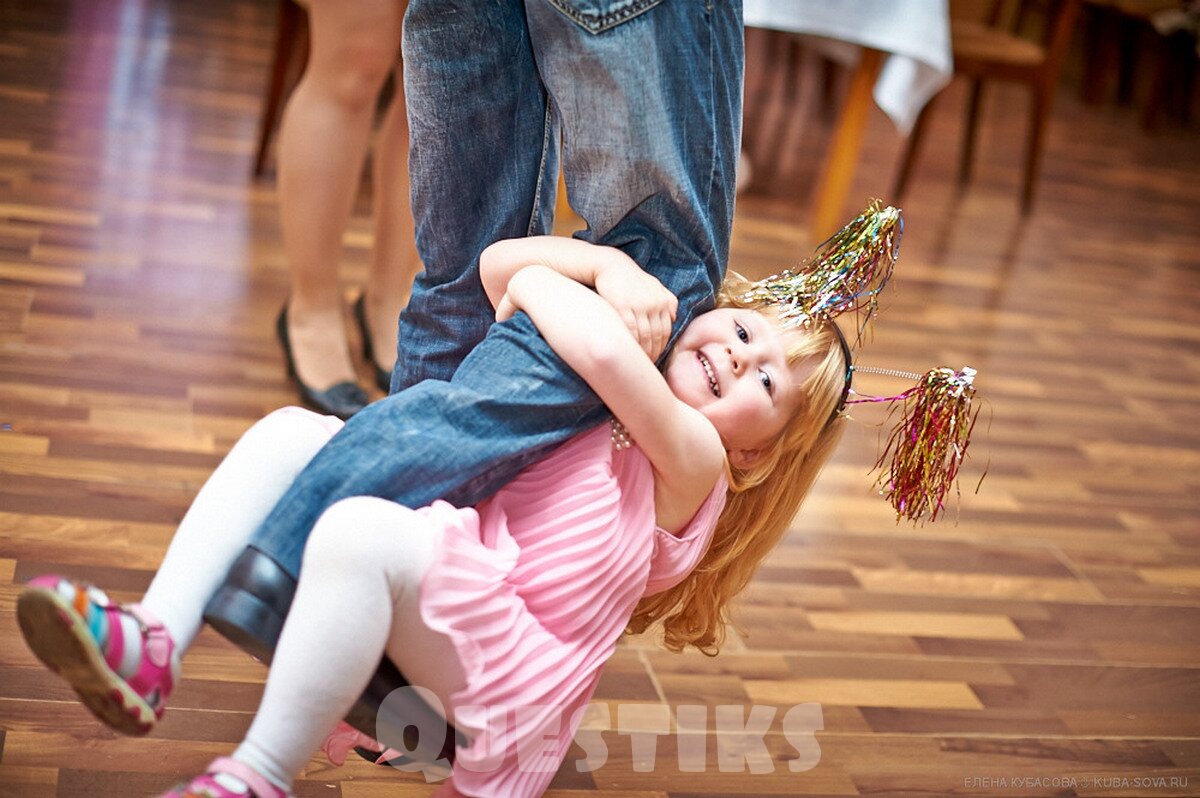
How to invent and arrange a quest for children at home with your own hands
- Determine whom the tasks are going to be for: the age and number of the children, whether other adults will participate or just help you (older children are excellent helpers). If there are more than eight children, it is better to divide them into two teams according to their abilities and age and make two parallel chains of hints that will not overlap, so the seekers will not interfere with each other and there will be enough tasks for everyone. In the end, prepare a surprise for each team! We do not recommend arranging competitions for children under 13. Invite dads and grandparents to join, make a couple of tasks more difficult – they will be pleased to participate and give children prompts when they are in doubt.
- Choose the space. Prepare it: remove unnecessary, fragile, valuable objects – everything that players can accidentally damage in the excitement of the game. Outside, if the territory is open (a park or a playground), figure out how to mark the boundaries of the search area so that the children do not run away: pull a string or draw a line with chalk.
- Look around carefully and choose the places where you’ll hide the hints with the tasks: they should not be too obvious to avoid early detection of the hint – then the quest takes less time and disappointment is inevitable. But do not make them too difficult as well – the places should match the children's age and abilities. Choose pieces of furniture, small items, something that occurs repeatedly (a chair, a cup, a windowsill) – there are several of them in any house, and the children will have to search everything! Use different rooms, do not forget about the children’s height when choosing the caches. In an open area (if there are other people there), make sure that outsiders do not accidentally discover parts of your quest. Be sure to provide an opportunity to get a hint in exchange for any action (song, dance, photo, etc.) or just state that the children can get a limited number of hints during the quest.
- Create a chain of tasks from the selected places, and write it down for yourself. Take 5-6 hiding places for five-year-olds and from 12 to 15 for teenagers and adults. Hand over the first hint personally, or put it in a prominent place, or ask your accomplice to deliver it to the door and ring the bell. Older children will be interested in receiving a mysterious text message, a strange photo of some place in the house or a video message on their laptop, and even an envelope from a pizza delivery guy! By the first hint, the children will determine the location of the second one, the second hint will point at the third one, etc. Example (in the house): lamp – rucksack – chair – plant – bicycle – phone – kettle - pillow – teacup – mirror. Example (in the country): tree – ladder – pool – sandbox – flowerbed – shovel – fence – swing – wheelbarrow – firewood.
- Determine the final destination where the gift will be hidden. If there are many children, make sure that everyone gets a little surprise, not just the birthday boy/girl. Badges, tokens, chocolate medals, key chains, slimes are just perfect.

Alright, so we’ve covered the order of actions. For the first time, we recommend a linear quest, where the tasks are performed in a sequence. When you have successfully conducted it, you can try other types:
- Сollective quest: performing tasks, children collect puzzle pieces, assemble the dragon seal and learn the secret from the text on the back. In a pirate quest, it is possible to collect all the pieces of the treasure map only by completing all the tasks from the cards. Draw the map yourself (crumple it and burn the edges a little with a candle), mark the place with the treasure with a cross and tear it into pieces.
- Cipher quest: at the very beginning, give the children a note where the place is already indicated, but the message is encrypted. They will get the key to the cipher by solving tasks.
- Quest with locks (a regular one with a key or a security lock). Give the gift right away, but lock it (perhaps with several locks!) To unlock the locks, you need to go through all the puzzles. How to code the numbers? By asking questions (how many piglets were there in the fairy tale?), or giving mathematical problems (according to the children’s knowledge), trick tasks (A girl has a puppy, a kitten, a chicken and a snake. How many legs do the girl and her pets have?), props (count the pebbles in the bag, or the amount of money in the purse) and even with the help of letters (pictures of a Fish, an Icicle, a Van and an Eagle are FIVE).
Different tasks for children’s quests at home
The most interesting thing is to choose a topic and create all tasks accordingly (but this is not strictly necessary). Does your child dream of space, love superheroes, read books about spies or collect princesses? Perhaps your teenager is an Instagram blogger and watches vlogs? Take advantage of this! Become a storyteller for a while (and also download themed pictures from the Internet, decorate cards with them or include them in tasks!):
- Detectives are investigating the case of a stolen birthday cake!
- A superhero school! Having solved all the tasks, the children will prove that they also have "superpowers" – dexterity, ingenuity and great friends!
- Rapunzel got lost, and the children help other princesses to find her (the final gift is a Rapunzel doll!)
- An expedition quest to the unexplored Grufosan planet, after which the children are initiated into astronauts and receive beautiful tokens with the image of the planet.
- The Kaput virus has infected the computer, and a group of friends must save important files…

The advantage of a thematic quest is that you can easily include active tasks in it: the usual games with a ball, balloons, paper lumps that the children have to throw in a target or a bucket, limbo, an extra chair game and other. It will be interesting for children under 10 years old.
The second type of tasks and hints is technological:
- SMS: an anagram (a word made up of another – a PEACH turns out of CHEAP, a THING is a NIGHT, DUSTY is STUDY, etc., you can google them) or a set of letters BGOSICKOPNAR stands for SCRAPBOOKING.
- Messages in social networks: the birthday boy/girl has suddenly got a message like:
Be delicious as an
Apple,
Light and crunchy, as the
Crisps,
One and only, brave and clever,
Nice and shiny,
You are the best!
The hint in the first letters of the lines – BALCONY.
- Photo riddles: print two photos of the same place made from the same angle, but change something; there will be a hint in this place.
- QR codes: the needed picture-hint is on the Internet, and the link is given in the form of a code that children will scan with a special program on their smartphone.
- Audio tasks: record the text of the hint on the voice recorder, change it in the voice editor app, or speed up a music track: children will listen to it, identify it, and its name will be a hint (the “Baby shark” song will indicate a toy shark, and "Barbie girl" - a collection of dolls).
The third (and most diverse) type of tasks in the quest are text, letter, graphic, logical, encrypted and digital. We will show you some examples of such tasks in detail (we drew them "in a hurry", it took about half an hour along with inventing them). Let's go back to the sequence: lamp – rucksack – chair – plant – bicycle – phone – kettle - pillow – teacup – mirror.
Let's imagine a situation like thar: some friends (5 boys and girls) have gathered to celebrate John’s birthday (he's 8 years old). After tea, John’s mother invites all guests to search their chairs. John saw a piece of paper with a drawn rebus (when inventing rebuses, take into account the children’s age so that they can solve them).
The rebus is solved! It’s a LAMP! The children looked for the lamps in three rooms and found a note with pictures.
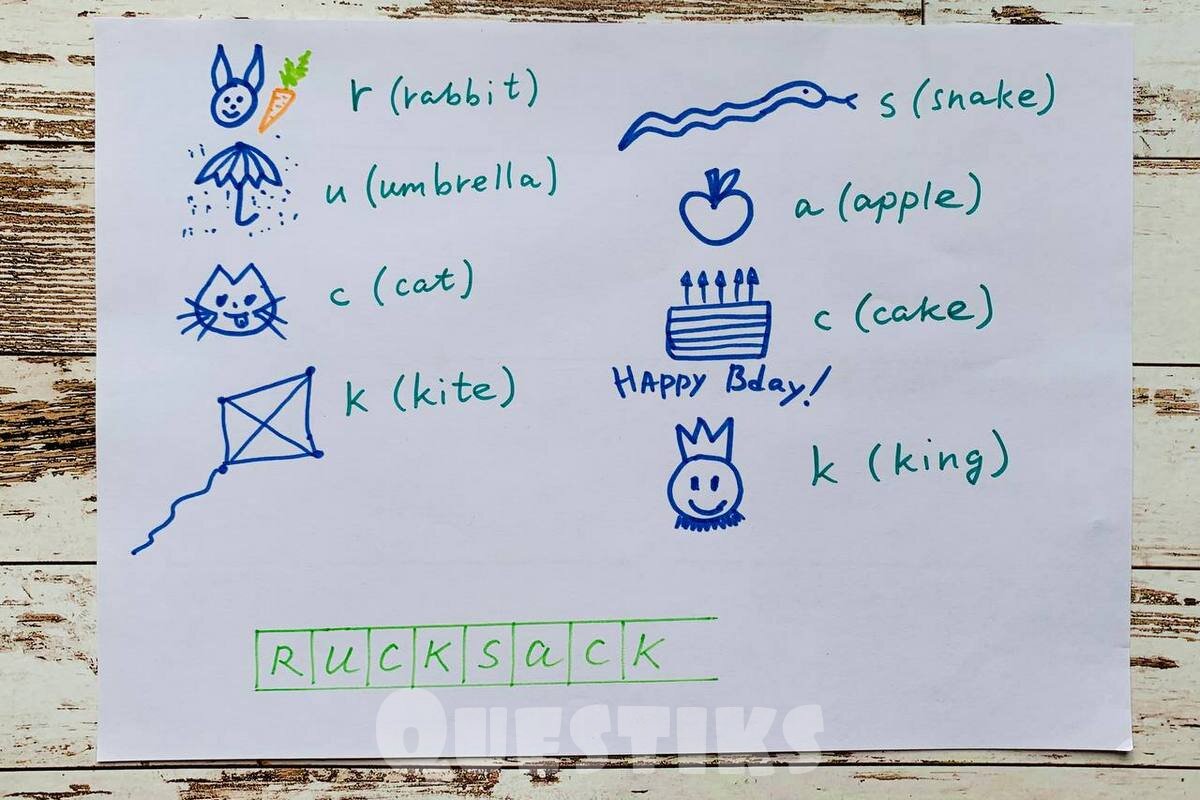
After some thinking, they guessed that they needed to use the first letters of the words. The word is RUCKSACK! There are two rucksacks in the house, and they found a funny man with a crossword in John’s rucksack.
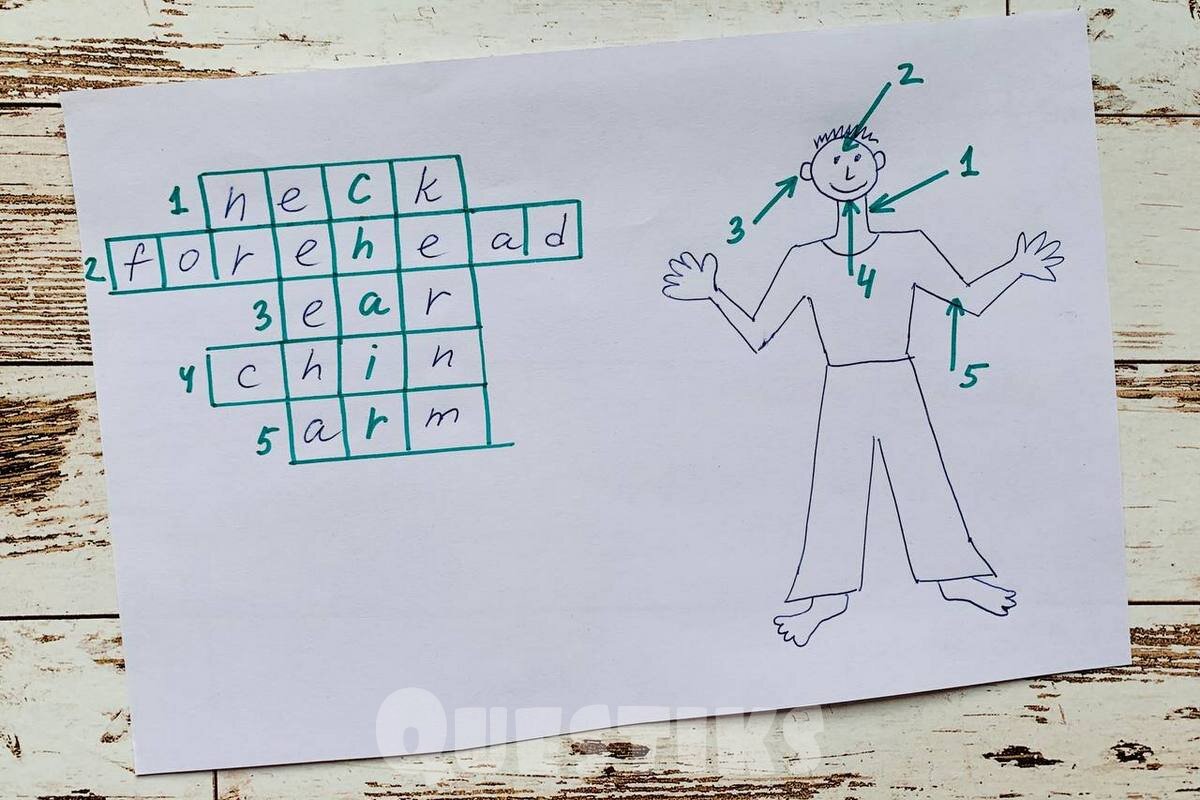
They wrote all the body parts correctly and saw the word CHAIR. Look there! The children examined the rest of the chairs in the house and found some pieces of a jigsaw puzzle.
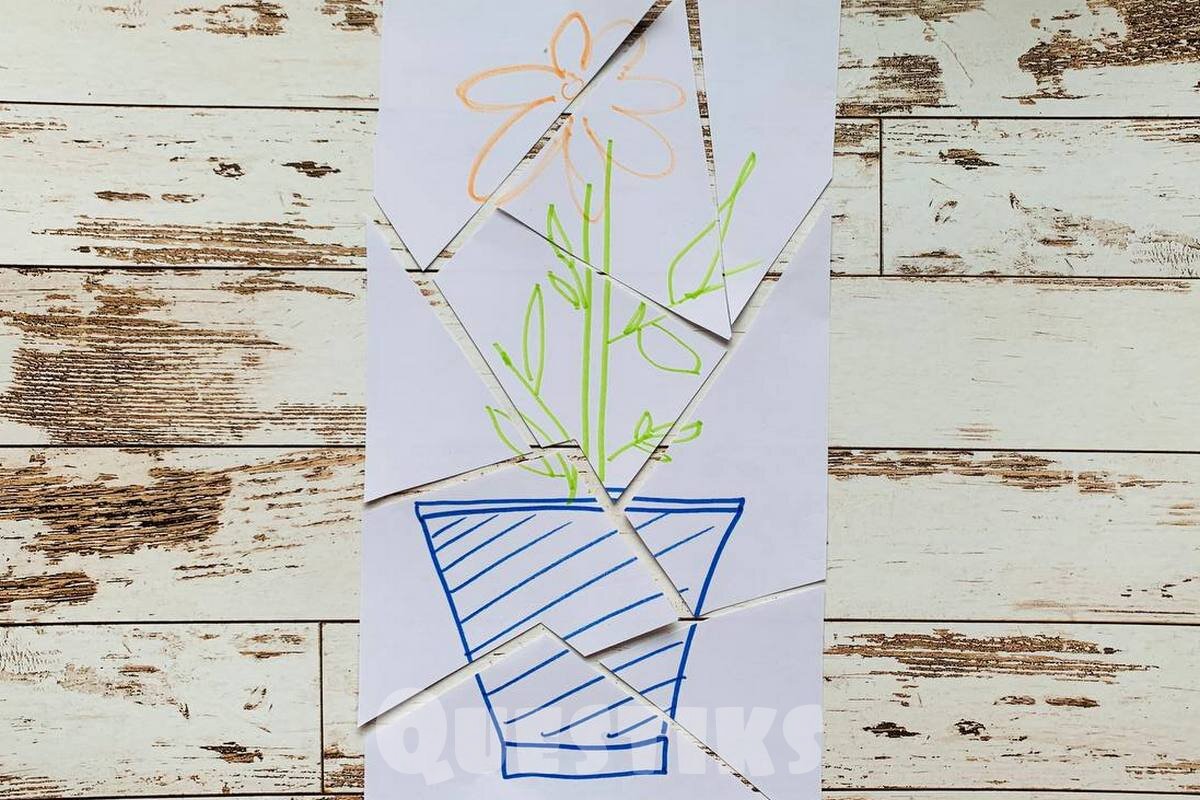
They assembled the word PLANT, so the next hint is in the flowerpot! There are many plants, so they looked in all the pots and found some strange letters and a pocket mirror.
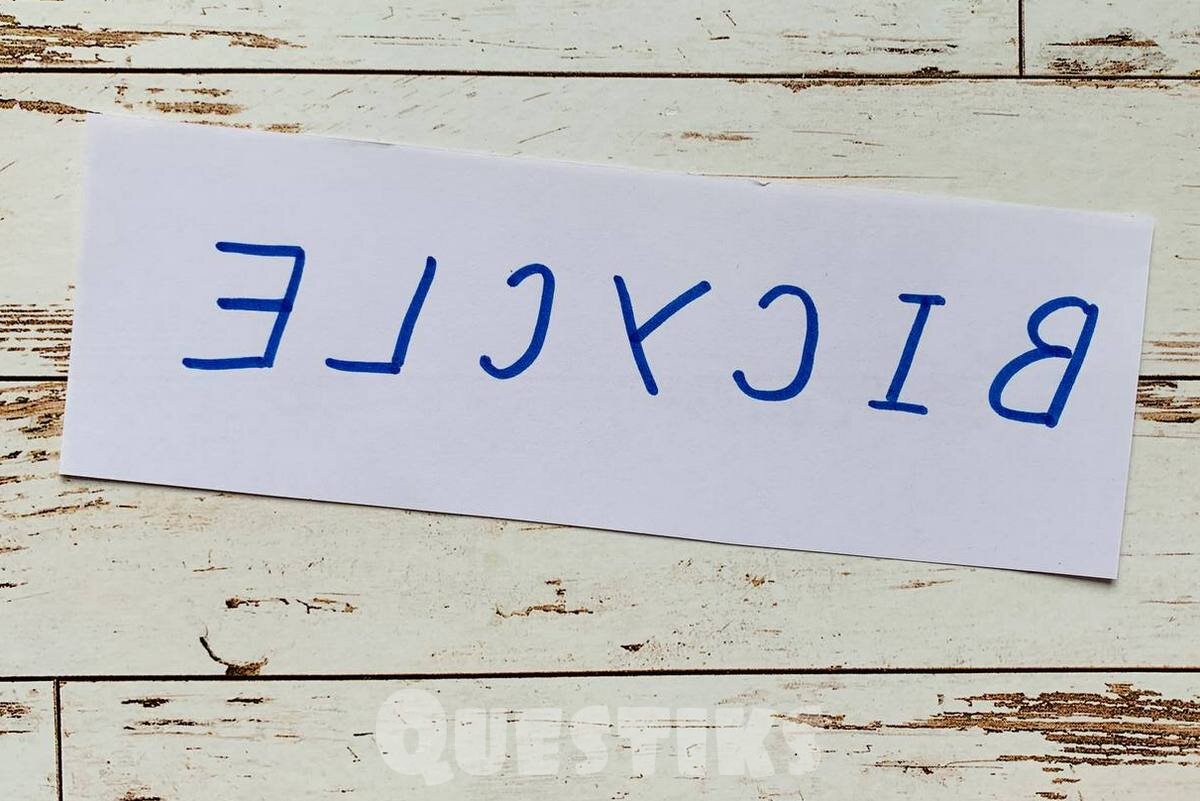
Let’s look at the letters in the mirror (write one word or a whole phrase) and read – BICYCLE. A sheet of paper with a letter square is hanging on the bicycle’s handlebar in the hall.
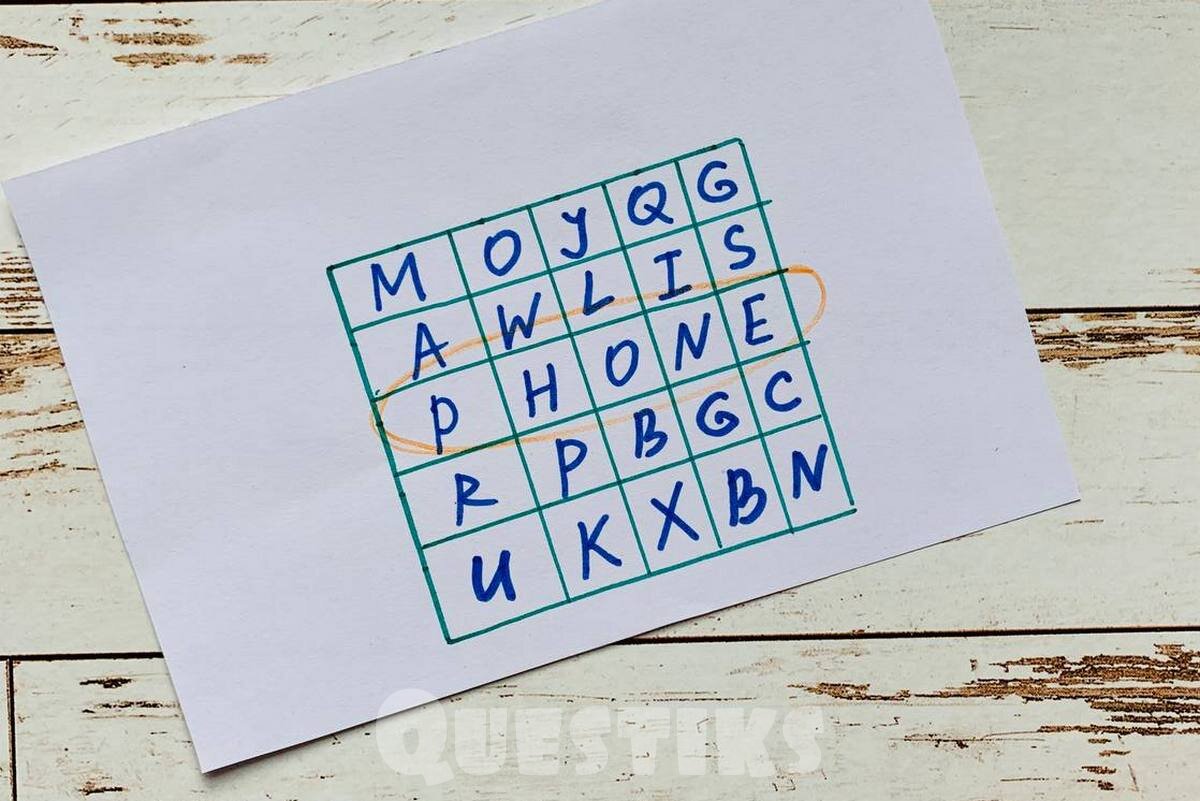
The children looked at the square carefully and saw the word PHONE. At this moment, John’s phone started ringing – his dad sent him a text. “Please, make me a cup of tea!” What does it mean? Look at the kettle! There’s a strange description of an object there.

It’s a PILLOW! The children ran to the bedroom and found a code under the pillow. And the key to solve it under another one (find a code on the Internet or come up with one yourself).
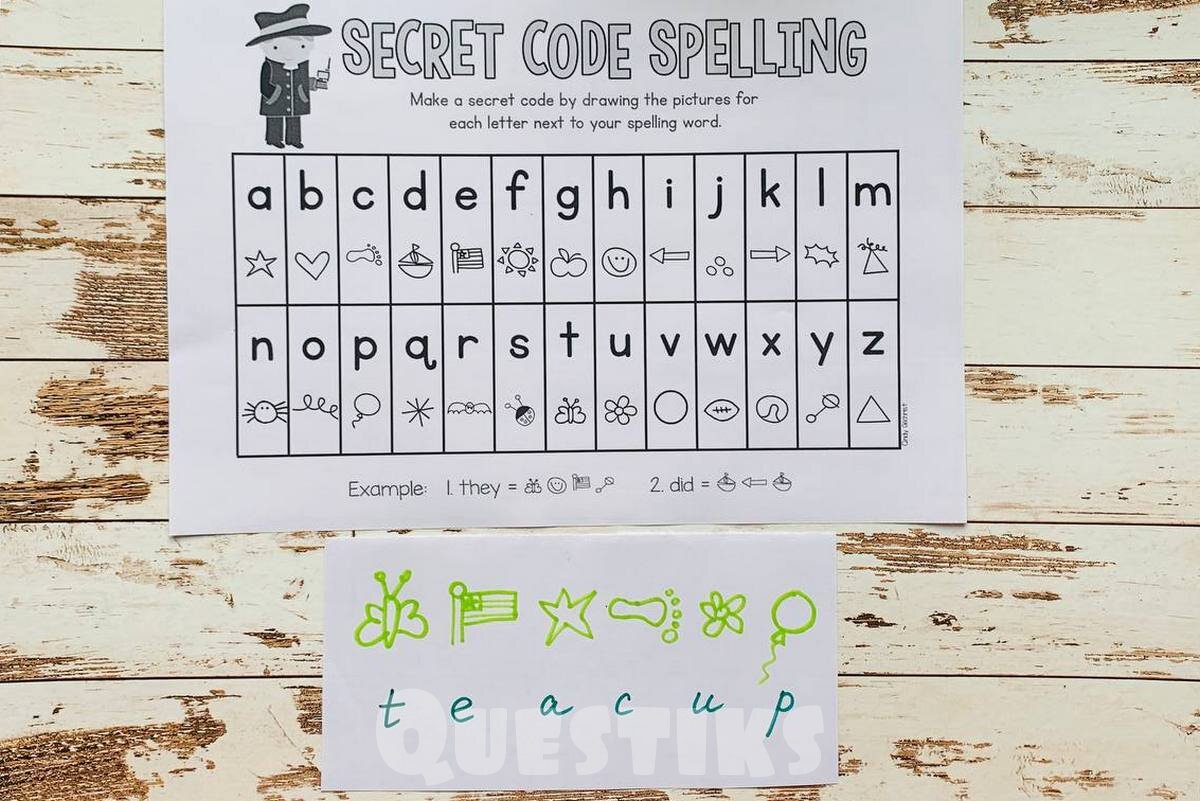
The children decoded the code and read the word TEACUP. They searched in the cupboard and found a piece of paper with a riddle among the cups.
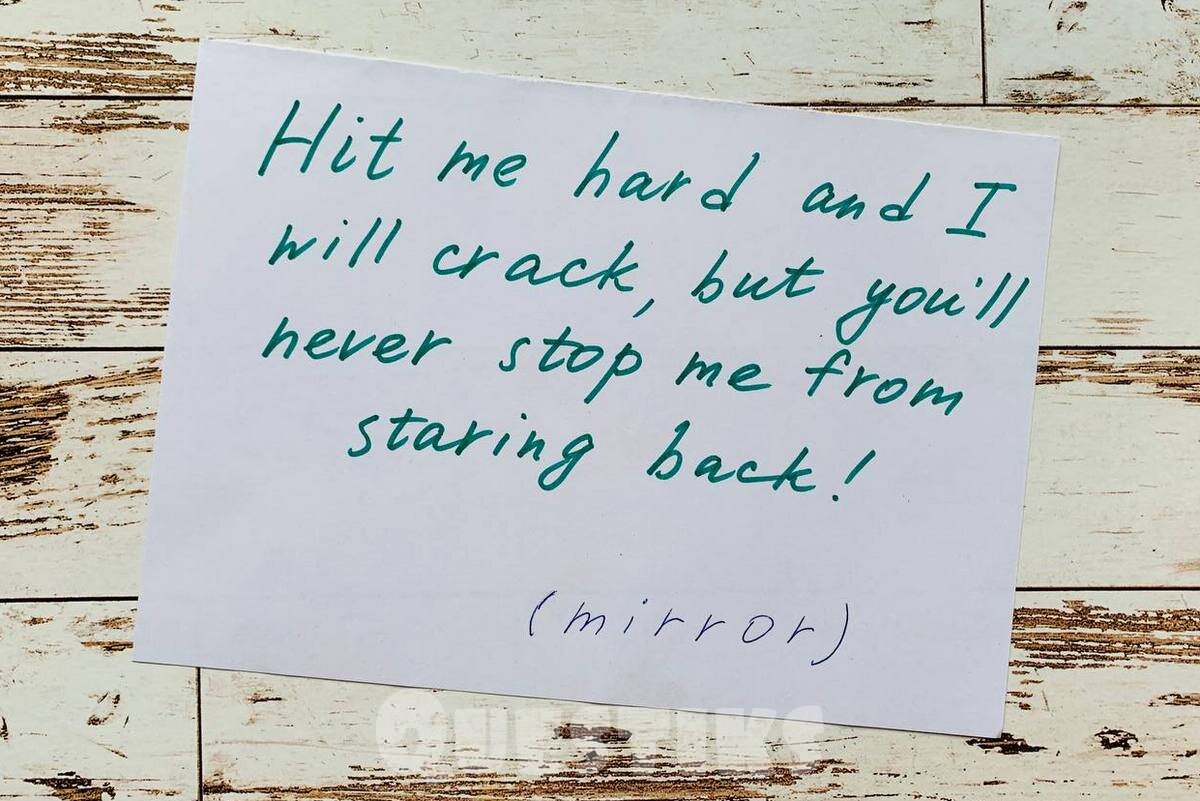
It’s the MIRROR! Hurry up, the gift is there! John gets the gift – it’s an envelope with cinema tickets for him and all his friends. That’s where they’re going to go now! The children are glad, and it took mom only an hour to prepare the quest. We’re sure that you’ll be able to create your own wonderful quest following this instruction and make your children happy!


